Human Orbital Spaceflights
![]()
International Flight No. 124Soyuz TM-8VityazUSSR |
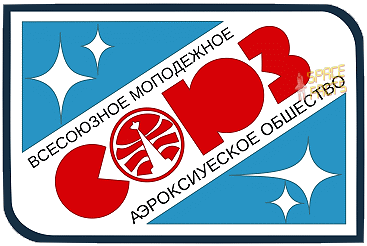 |
![]()
Launch, orbit and landing data
walkout photo |
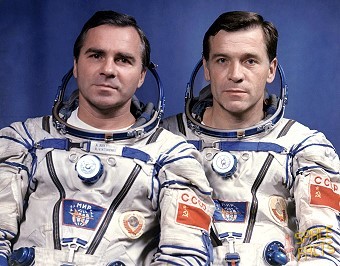 |
|||||||||||||||||||||||
alternative crew photo |
alternative crew photo |
|||||||||||||||||||||||
alternative crew photo |
||||||||||||||||||||||||
alternative crew photo |
||||||||||||||||||||||||
Crew
| No. | Surname | Given names | Position | Flight No. | Duration | Orbits | |
| 1 | Viktorenko | Aleksandr Stepanovich | Commander | 2 | 166d 06h 58m 16s | 2631 | |
| 2 | Serebrov | Aleksandr Aleksandrovich | Flight Engineer | 3 | 166d 06h 58m 16s | 2631 |
Crew seating arrangement
|
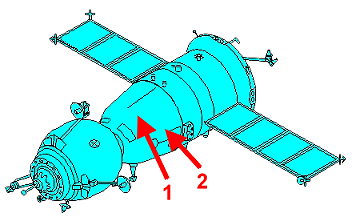 |
|
||||||||||||
Backup Crew
|
 |
|||||||||||||||
Hardware
| Launch vehicle: | Soyuz-U2 (No. 19M122S T15000-036) |
| Spacecraft: | Soyuz TM-8 (7K-STM No. 58) |
Flight
|
Launch from the Baikonur Cosmodrome and
landing 55 km northeast of Arkalyk. Following a two-day solo flight Soyuz TM-8 docked manual controlled with the Mir space station on September 07, 1989, because the Kurs rendezvous and docking system malfunctioned. Aleksandr Viktorenko took over manual control and withdrew to 20 meters, and then docked manually. The crew became the fifth resident crew of the Mir space station. Soyuz TM-8 arrived at Mir after five months during which the station was uninhabited. The Kvant2 and Kristall modules were now ready for launch, and the station began its second period of expansion. On September 29, 1989 the cosmonauts installed equipment in the docking system in preparation for the arrival of Kvant2, the first of Mir's 20-ton add-on modules. Solar storm warnings reached the cosmonauts. On September 30, 1989 a powerful flare burst out on the Sun. Initial predictions indicated that the cosmonauts could receive many times the maximum permissible level of radiation. In the event, the cosmonauts received only about as much radiation as they would normally receive in two weeks of flight. It was announced on October 10, 1989 that problems with a batch of computer chips pushed back the launch of Mir's second add-on module by at least 40 days from the planned October 16, 1989 launch date. The major focus of Aleksandr Viktorenko and Aleksandr Serebrov's mission was to receive, check out, and activate the module, so their schedule underwent heavy revision. Deconserving of complex was the main goal of the mission. Scientific experiments in the areas of medicine, geophysics, space technology, earth observation, astronomy, materials sciences and several more were done. Kvant2 was launched on November 26, 1989. Soon after launch the TsUP discovered that the right solar array had not deployed properly, allowing it to flop freely. By rolling Kvant2 and rotating the array simultaneously, the TsUP was able to fully extend and lock the array. On December 02, 1989 Kvant2 closed to within 20 m of the Mir front port before its Kurs control system terminated the approach. It had sensed that the module was moving too fast. Problems also developed on Mir: The Argon 16B control computer shut down the attitude control gyrodynes in Kvant after detecting an error. Aleksandr Viktorenko and Aleksandr Serebrov assumed manual control of Mir for the second attempt, which was successful. The Lyappa manipulator arm on Kvant2 then inserted itself into a fixture on the multiport docking node and pivoted the module into place at the top lateral port. The transfer required about 1 hour. Kvant2 was the second addition to the Mir core module and was attached to a radial docking port of the core module's transfer compartment. Based on a transport logistics spacecraft originally intended for the Salyut station program, it was designed to host life science, materials science, and Earth observation experiments. It also carried a substantial amount of equipment to improve living conditions and operations in the overall complex including electrolysis units to provide oxygen from recycled water, a water supply system, two water regeneration systems, sanitation facilities, a shower, and a compartment designed to enhance EVA's. It had a mass of 19.5 tons, a length of 11.9 m, and a maximum diameter of 4.35 m. The module was divided into three pressurized compartments: instrumentation/cargo, science instruments and an airlock. The total pressurized volume was 61 cubic meters. The airlock provided EVA capability and also contained a cosmonaut maneuvering unit that increased the range and complexity of tasks that could be attempted during EVA. Spacecraft: 2.3.9 kN main engines and several 400N attitude control thruster clusters used for intial docking maneuvers (NTO/UDMH). 2 26 sq. m solar arrays provided 6.9 kW. 360 A-hour energy storage provided by NiCd battery system. Star sensor and momentum wheel system used to reduce propellant needs for station pointing. The scientific payload consisted of: MKF-6MA Earth resources film camera - 6 spectral bands; KAP-350 topographic camera; ASPG-M scan platform carrying ITS-7D IR spectrometer, ARIZ X-ray spectrometer, MKS-M2 optical spectrometer, TV cameras, Gamma 2 spectrometer package; Sprut 5 charged particle spectrometer; Phaza AFM-2 spectrometer; Spektr-256 spectrometer; Volna 2 propellant tank demonstration; Inkubator 2 - bird egg incubator; Cosmic dust detectors; Icarus EVA unit. On December 12, 1989 the crew flew Soyuz TM-8 from the aft port of Mir and docked to the forward port now cleared of the Kvant2 module. Progress M-2 arrived at Mir and remained docked to the aft port from December 22, 1989 - February 09, 1990. The new guidance control computer for Mir, the Salyut 5B system delivered by Kvant2, needed star sensors more capable than those in place on Kvant. The cosmonauts performed the first EVA on January 08, 1990 (2h 56m). Aleksandr Viktorenko and Aleksandr Serebrov opened one of the three free docking node hatches, transferred the twin 80-kg sensor packages outside, and installed them on Kvant. The start of the EVA was delayed 1 hour by a depressurization problem in Soyuz TM-8 when the cosmonauts lowered pressure in the docking node, an improperly set valve released air from the spacecraft as well. The second spacewalk of both cosmonauts occurred on January 11, 1990 (2h 54m). They removed for return to Earth the Enchantillons space exposure experiment rack set up by Jean-Loup Chrétien during his December 1988 EVA, removed and discarded the ERA platform installed by Jean-Loup Chrétien and Aleksandr Volkov, and made modifications to the docking node in preparation for the arrival of the next large module, Kristall. In addition, they installed space exposure cassettes containing non-metallic materials on the Mir core module and installed on Kvant the Arfa ("harp")-E experiment, which monitored the ionosphere and magnetosphere. On January 26, 1990 Aleksandr Viktorenko and Aleksandr Serebrov performed the third EVA (3h 02m). For the first time they used the new Orlan-DMA spacesuits. These were improved versions of the Orlan suits they had worn on their first two EVAs. They then entered and depressurized the special EVA airlock compartment at the outboard end of Kvant2. The EVA airlock hatch is wider than the docking hatches (1 m vs 0.8 m) to permit passage of the YMK, the Soviet MMU equivalent, which is stored in Kvant2. The Kvant2 Special Airlock Compartment (SALC) was also inaugurated on this EVA. The SALC, which became the main airlock of the Mir complex, contained the Soviet equivalent of the U.S. MMU, the Sredstvo Peredvizheniy Kosmonavtov ("Cosmonaut Maneuvering Equipment") (SPK). The central instrument-science compartment of Kvant2 can also be sealed and depressurized, expanding the size of the airlock and providing a backup. The cosmonauts attached a mooring post to the outside of the airlock compartment and removed a Kurs antenna so it could not interfere with future EVAs. The fourth EVA was conducted on February 01, 1990 (4h 59m). Aleksandr Serebrov trained for many years to fly the SPK using a computer-operated simulator. For this test, he remained attached to Mir at all times by a 60-m (197-ft) tether. The slender tether was deemed necessary because the station could not maneuver to retrieve him if he became stranded out of reach by SPK failure. It was attached to an electric winch on the dock installed on the previous EVA. The winch automatically took up slack in the tether to prevent tangling. The SPK attached to "magnetic" attachment points on the dock. During the test the visitor balcony in the TsUP was packed to capacity. Aleksandr Serebrov flew the SPK out 5 m (16.4 ft) from Mir and back three times. He then backed to 33 m (108 ft), stopped, and completed various maneuvers. Aleksandr Viktorenko videotaped Aleksandr Serebrov. During his final test maneuvers, Aleksandr Serebrov determined that he was approaching the dock off course. He corrected, and the tether caused him to flip backwards and rock "like a pendulum." The fifth and final EVA by both cosmonauts occurred on February 05, 1990 (3h 45m). Before this second and final flight of the SPK, Aleksandr Viktorenko attached the Spin-6000 device to an attachment fixture on the front of the SPK belly band. Spin-6000 measured the radiation background outside Mir, focusing on the secondary radiation produced by atomic particles striking the station's hull. Aleksandr Viktorenko backed away to 45 m and did an "aerobatic" roll, covering a total of about 200 m. He needed help from Aleksandr Serebrov to redock because Spin-6000 blocked his view of the dock. According to Vladimir Shatalov, Head of Cosmonaut Training, the SPK was to be used after these first two tests for undefined "practical purposes." Other officials said that it would be used to inspect Mir's exterior. In fact, the SPK remained stored inside Mir until February 1996, when it was abandoned at the end of its dock outside the Kvant2 airlock hatch to make more room in the Kvant2 SALC. On February 13, 1990 the Mir-6 relief crew of Aleksandr Balandin and Anatoli Soloviyov arrived at the station aboard Soyuz TM-9. Soon after they arrived in orbit, Aleksandr Balandin and Anatoli Soloviyov noted that three of eight thermal insulation blankets on their spacecraft's descent module had come loose at their lower (heat shield) ends and were waving about as the spacecraft maneuvered in space. It was thought they could block optical navigation sensors, and that the damaged insulation might cause the spacecraft to overheat or cool down so much that condensation would form on its optical equipment. The possibility existed that an electrical short might occur if condensation developed on equipment. Docking with Mir occurred as normal. The cosmonauts and TsUP worked out procedures by which the TsUP monitored Soyuz TM-9's temperature and maneuvered Mir to move it in and out of sunlight as needed to maintain proper temperature. In the meantime, cosmonauts worked in the hydrolab training facility in Zvezdny Gorodok, outside Moscow, to develop EVA repair procedures. Consideration was also given to sending a rescue Soyuz-TM carrying a single cosmonaut to pick up the cosmonauts and return them to Earth. The Soyuz spacecraft is composed of three elements attached end-to-end - the Orbital Module, the Descent Module and the Instrumentation/Propulsion Module. The crew occupied the central element, the Descent Module. The other two modules are jettisoned prior to re-entry. They burn up in the atmosphere, so only the Descent Module returned to Earth. The deorbit burn lasted about 240 seconds. Having shed two-thirds of its mass, the Soyuz reached Entry Interface - a point 400,000 feet (121.9 kilometers) above the Earth, where friction due to the thickening atmosphere began to heat its outer surfaces. With only 23 minutes left before it lands on the grassy plains of central Asia, attention in the module turned to slowing its rate of descent. Eight minutes later, the spacecraft was streaking through the sky at a rate of 755 feet (230 meters) per second. Before it touched down, its speed slowed to only 5 feet (1.5 meter) per second, and it lands at an even lower speed than that. Several onboard features ensure that the vehicle and crew land safely and in relative comfort. Four parachutes, deployed 15 minutes before landing, dramatically slowed the vehicle's rate of descent. Two pilot parachutes were the first to be released, and a drogue chute attached to the second one followed immediately after. The drogue, measuring 24 square meters (258 square feet) in area, slowed the rate of descent from 755 feet (230 meters) per second to 262 feet (80 meters) per second. The main parachute was the last to emerge. It is the largest chute, with a surface area of 10,764 square feet (1,000 square meters). Its harnesses shifted the vehicle's attitude to a 30-degree angle relative to the ground, dissipating heat, and then shifted it again to a straight vertical descent prior to landing. The main chute slowed the Soyuz to a descent rate of only 24 feet (7.3 meters) per second, which is still too fast for a comfortable landing. One second before touchdown, two sets of three small engines on the bottom of the vehicle fired, slowing the vehicle to soften the landing. |
EVA data
| Name | Start | End | Duration | Mission | Airlock | Suit | |
| EVA | Serebrov, Aleksandr | 08.01.1990, 20:23 UTC | 08.01.1990, 23:19 UTC | 2h 56m | Soyuz TM-8 | Mir | Orlan-DMA No. 10 |
| EVA | Viktorenko, Aleksandr | 08.01.1990, 20:23 UTC | 08.01.1990, 23:19 UTC | 2h 56m | Soyuz TM-8 | Mir | Orlan-DMA No. 6 |
| EVA | Serebrov, Aleksandr | 11.01.1990, 18:01 UTC | 11.01.1990, 20:55 UTC | 2h 54m | Soyuz TM-8 | Mir | Orlan-DMA No. 10 |
| EVA | Viktorenko, Aleksandr | 11.01.1990, 18:01 UTC | 11.01.1990, 20:55 UTC | 2h 54m | Soyuz TM-8 | Mir | Orlan-DMA No. 6 |
| EVA | Serebrov, Aleksandr | 26.01.1990, 12:09 UTC | 26.01.1990, 15:11 UTC | 3h 02m | Soyuz TM-8 | Mir - Kvant2 | Orlan-DMA No. 8 |
| EVA | Viktorenko, Aleksandr | 26.01.1990, 12:09 UTC | 26.01.1990, 15:11 UTC | 3h 02m | Soyuz TM-8 | Mir - Kvant2 | Orlan-DMA No. 12 |
| EVA | Viktorenko, Aleksandr | 01.02.1990, 08:15 UTC | 01.02.1990, 13:14 UTC | 4h 59m | Soyuz TM-8 | Mir - Kvant2 | Orlan-DMA No. 12 |
| EVA | Serebrov, Aleksandr | 01.02.1990, 08:15 UTC | 01.02.1990, 13:14 UTC | 4h 59m | Soyuz TM-8 | Mir - Kvant2 | Orlan-DMA No. 8 |
| EVA | Serebrov, Aleksandr | 05.02.1990, 06:08 UTC | 05.02.1990, 09:53 UTC | 3h 45m | Soyuz TM-8 | Mir - Kvant2 | Orlan-DMA No. 8 |
| EVA | Viktorenko, Aleksandr | 05.02.1990, 06:08 UTC | 05.02.1990, 09:53 UTC | 3h 45m | Soyuz TM-8 | Mir - Kvant2 | Orlan-DMA No. 12 |
Relocations of Manned Spacecrafts
| Spacecraft | from | Undocking | Time UTC | to | Redocking | Time UTC |
| Soyuz TM-8 | Mir - Kvant | 12.12.1989 | 08:22:30 | Mir - Baseblock | 12.12.1989 | 08:42:32 |
Photos / Graphics
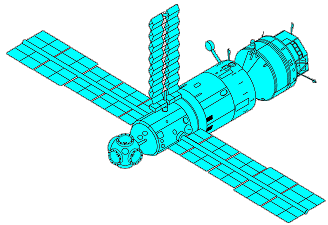 |
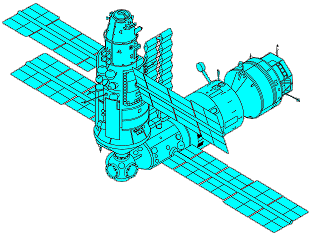 |
 |
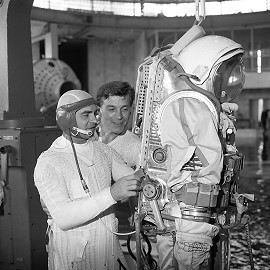 |
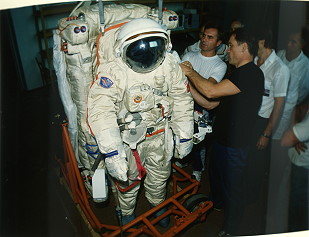 |
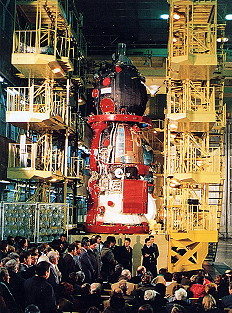 |
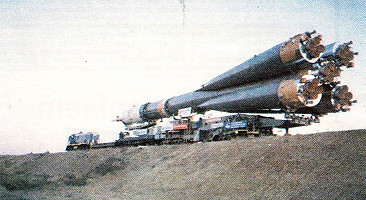 |
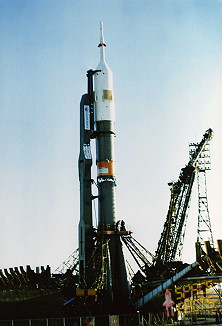 |
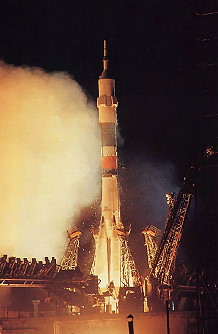 |
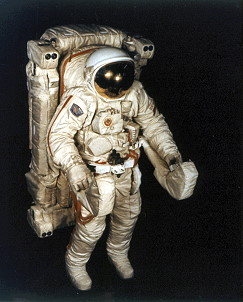 |
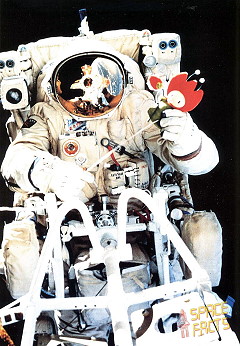 |
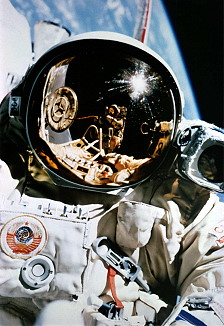 |
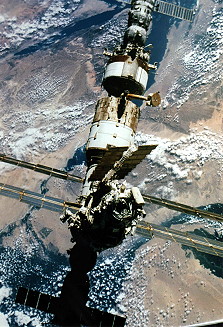 |
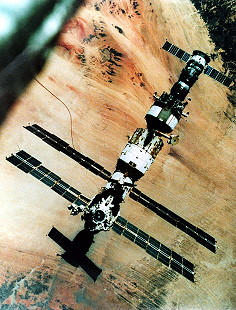 |
 |
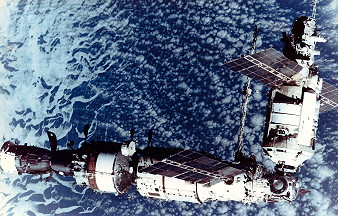 |
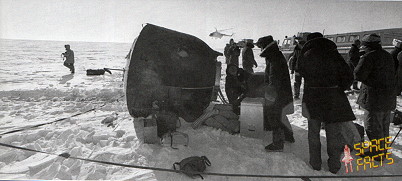 |
|
more EVA photos |
|
| © |  |
Last update on March 28, 2020.  |
 |